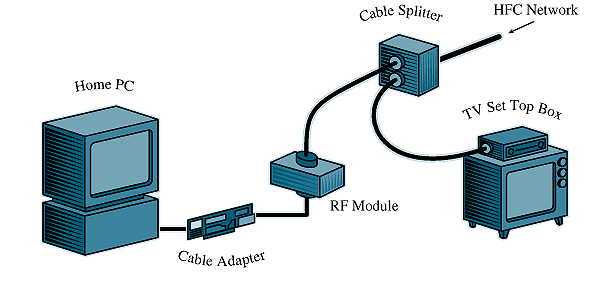
A cable modem is a device that hooks up to your computer and gives you
high-speed data access (such as to the internet) via a cable TV (CATV) network
instead of through your telephone wire (or any other network you are using).
In other words cable modems don't connect to your phone line but they connect
to the same coaxial cable that you connect your television to.
The idea behind cable modems is to allow faster direct access to the Internet
via your cable company, which, because of recent legislations, may enter the
telecommunications market. Other services may include access to streaming audio
and video servers, local content (community information and services), access
to CD-ROM servers, and a wide variety of other service offerings.

Motorola recently developed cable modems (CyberSURFR TM cable Modem/ CyberSURFR Wave TM Cable Modem) that run at 10/30 Mbps (compared to 28.8 kbps on a fast modem, 10 Mbps on the Ethernet and 1.544 Mbps on a pair of T1 lines). These modems are two-way, meaning that you get high-speed service from the internet to your PC and from your PC back to the internet. Your cable operator may need to upgrade their system before you receive cable modem service.
Although it probably would be cheaper to produce the cable modem as an internal card for the computer, this would require different printed-circuit cards for different kinds of computers, and additionally would make the demarcation between cable network and the subscriber's computer too fuzzy.
Information on Cable Modems has been collected from the following sites :